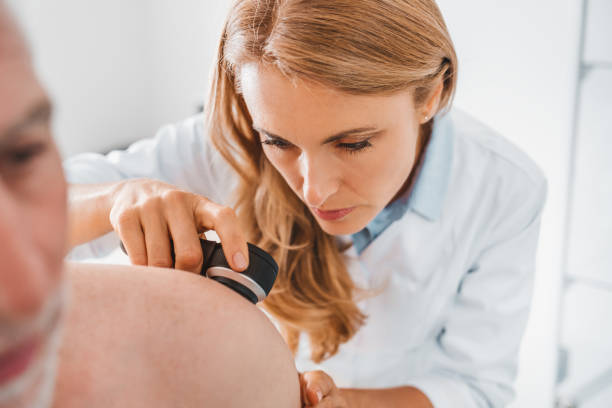It’s easy to overlook a new bump or mole, especially if it doesn’t hurt or seem serious. But if something on your skin looks or feels different, it may be a sign to pay closer attention. Many skin growths are harmless, but some may be abnormal and deserve a professional evaluation.
At Adena Dermatology, our focus is not just on diagnosing conditions but also on helping every patient feel supported and confident in their care. As Mary Jo Kendrick, MD, shares, “Every patient should leave feeling better about themselves.” That philosophy guides every evaluation and treatment decision.
Early skin checks can make a big difference in both your health and peace of mind. In this article, we’ll walk through common skin growth types, what signs to watch for, and how early care can help.
Understanding skin growth types
Not all skin growths are the same. Some are harmless, and others may need closer attention. Knowing what to look for can help you feel more in control and less anxious about changes in your skin.
Benign skin growths
Benign means non-cancerous. These types of growths are very common and usually not dangerous. You might notice them more as you get older. Common benign growths include:
Moles: These small, brown or black spots are usually round and uniform in shape. Most are harmless, but if a mole changes in size, shape, or color, it’s a good idea to have it checked.
Skin tags: These soft, flesh-colored bumps often appear on the neck, underarms, or eyelids. They’re not harmful but can be removed if they become irritated or bothersome.
Seborrheic keratoses: These waxy, wart-like growths are usually tan, brown, or black. They may look concerning, but are not cancerous.
Malignant skin growths
Malignant means cancerous. These growths need prompt medical care, but catching them early makes a real difference. Types include:
Basal cell carcinoma: Often appears as a shiny bump or pink growth, usually on sun-exposed areas like the face or neck. It grows slowly and rarely spreads, but it still requires treatment.
Squamous cell carcinoma: May look like a rough, scaly patch or a sore that doesn’t heal. It’s more likely to spread than basal cell carcinoma, especially if left untreated.
Melanoma: This is the most serious form of skin cancer. It can develop in an existing mole or appear as a new dark spot with irregular borders. Melanoma can spread quickly, so early detection is critical.
If you notice something new or changing on your skin, don’t wait to get it checked. According to the American Academy of Dermatology (AAD), early detection is one of the most effective ways to treat skin cancer successfully (AAD, 2022).
Why early checks matter
It’s easy to put off getting a spot checked, especially when life feels busy or the issue doesn’t seem urgent. But addressing skin growth concerns early gives you clarity, confidence, and better options for care, as well as saves you worry down the road.
Taking just a few minutes each month to check your skin — or scheduling a visit with a dermatologist — helps you stay informed and ahead of potential concerns.
What does a skin check involve?
There are two types of skin checks we recommend: at home or with a doctor. Speak up when you notice a change to gain options, answers, and peace of mind.
Checking at home
You know your body best. Taking a few quiet moments each month to look over your skin can help you catch changes before they become problems. Stand in front of a mirror with good lighting. Look for:
New spots or bumps
Moles that change in shape, size, or color
Any sore that doesn’t heal
Itchy, scaly, or painful areas
Use a hand mirror for hard-to-see areas, such as your back or scalp. If you notice something that doesn’t seem right, write it down or take a photo. You don’t have to be an expert. That’s what we’re here for.
Partnering with your dermatologist
At Adena Health, we believe no one should feel unsure or alone when it comes to their health. A professional skin check is quick, respectful, and focused entirely on your well-being. In most cases, you’ll wear a gown so your provider can examine your skin from head to toe in a private setting. They may use a magnifying tool to examine specific areas more closely.
If something needs attention, your provider will walk you through the next steps. Sometimes a biopsy is recommended. Other times, we may just monitor the area. Either way, you’ll leave knowing exactly where things stand.
As Dr. Kendrick says, “You don’t need to know what a spot is to know it doesn’t feel right. That’s why we’re here to take a look, answer your questions, and help you feel at ease.”

Take the next step toward peace of mind
You don’t have to live with uncertainty about your skin. Whether you’ve noticed a new spot or just want to stay ahead of your health, the team at Adena Dermatology is here to help you feel informed, cared for, and confident. Dr. Kendrick and our providers take time to listen, examine, and guide you toward the best next step — all with the care you’d expect from someone who lives right here in your community.
To schedule a skin check or learn more about our dermatology services, visit Adena Dermatology or call us at 740-779-8580.
